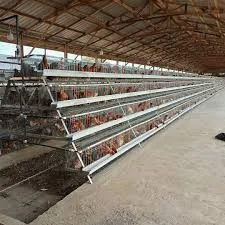Affordable Solutions for Chicken Feed Blending and Nutrition Optimization
Nov . 27, 2024 04:45 Back to list
Affordable Solutions for Chicken Feed Blending and Nutrition Optimization
The Importance of Chicken Feed Mixers in Poultry Farming
As the global demand for poultry products continues to rise, poultry farmers are increasingly seeking efficient and cost-effective solutions to enhance their production capabilities. One such solution is the chicken feed mixer, a vital piece of equipment designed to ensure that hens receive a balanced and nutritious diet. This article explores the significance of chicken feed mixers in poultry farming, their working principles, benefits, and their impact on the overall farming process.
Understanding Chicken Feed Mixers
Chicken feed mixers are specialized machines that blend various ingredients to produce a uniform and consistent feed for poultry. These mixers can handle a wide variety of feed components, including grains, protein sources, vitamins, and minerals. The aim is to create a complete feed that meets the nutritional needs of chickens at different growth stages, whether they are broilers, layers, or breeders.
There are several types of chicken feed mixers available on the market, including horizontal mixers, vertical mixers, and paddle mixers. Each design has its advantages, depending on the scale of the farm and the specific requirements of the feed formulation. Horizontal mixers are known for their efficiency and speed, while vertical mixers are often preferred for their space-saving designs.
How Chicken Feed Mixers Work
The operation of a chicken feed mixer is relatively simple yet highly effective. First, the ingredients are weighed and loaded into the mixer according to a predetermined formula. This formula is designed based on the nutritional needs of the chickens and may vary depending on the specific type of poultry being raised.
Once the ingredients are loaded, the mixer uses various blending methods—such as paddle mixing or auger mixing—to combine the components thoroughly. The mixing process must be precise to ensure that every particle is evenly distributed, preventing nutrient segregation. This uniformity is crucial for promoting healthy digestion and optimal growth in poultry.
After mixing, the feed is usually discharged into storage bins or directly into feeding systems. Many modern mixers are equipped with automated technology, allowing for precise control over the mixing process and ensuring that feed formulations adhere to strict quality standards.
Benefits of Using Chicken Feed Mixers
chicken feed mixer

1. Nutritional Consistency One of the primary advantages of using a chicken feed mixer is the ability to produce a consistent feed quality. A well-mixed feed ensures that every chicken receives the necessary nutrients, leading to improved health and productivity.
2. Cost-Effectiveness By allowing farmers to create their feed blends, mixers can significantly reduce feed costs. Farmers can take advantage of local grain sources or bulk ingredient purchases, which often leads to substantial savings over time.
3. Customization Different poultry species and production stages require unique nutritional formulations. Chicken feed mixers enable farmers to customize their feed recipes to meet these specific needs, enhancing the overall effectiveness of their feeding programs.
4. Time Efficiency Manual mixing of chicken feed can be labor-intensive and time-consuming. Mixers automate this process, freeing up time for farmers to focus on other aspects of their operations, such as flock management and health monitoring.
5. Improved Animal Health Consistent and properly balanced diets provided by well-mixed feed contribute to the overall health of poultry. This results in better growth rates, egg production, and lower mortality rates, which, in turn, can yield higher profits for farmers.
Impact on Poultry Farming
The introduction of chicken feed mixers has transformed poultry farming practices, allowing for greater efficiency and higher production levels. As the poultry industry continues to grow, the importance of quality feed becomes increasingly evident. Feed mixers play a critical role in this equation by ensuring that nutrition is consistent and tailored to the needs of the birds.
Moreover, as environmental concerns rise, the ability to formulate feed using local and sustainable ingredients becomes a crucial factor. Chicken feed mixers facilitate this by allowing farmers to mix different plant-based proteins and grains, reducing reliance on imported feed materials.
Conclusion
In conclusion, chicken feed mixers are indispensable tools in modern poultry farming. They enhance the efficiency of feed production, ensure nutritional consistency, and contribute to the overall health and productivity of poultry. As the industry evolves, the demand for high-quality, customized feed will continue to drive the importance of these mixers. Investing in a reliable chicken feed mixer can thus prove to be a wise decision for poultry farmers looking to optimize their operations and improve their bottom line.
-
Automatic Feeding Line System - Anping Yize|Poultry Efficiency&Durability
NewsJul.29,2025
-
Automatic Feeding Line System-Anping County Yize Metal Products Co., Ltd.|Durable PP Material&Easy Maintenance
NewsJul.29,2025
-
Automatic Feeding Line System-Pan Feeder Nipple Drinker|Anping County Yize Metal Products Co., Ltd.
NewsJul.29,2025
-
Hot Sale 24 & 18 Door Rabbit Cages - Premium Breeding Solutions
NewsJul.25,2025
-
Automatic Feeding Line System Pan Feeder Nipple Drinker - Anping County Yize Metal Products Co., Ltd.
NewsJul.21,2025
-
Automatic Feeding Line System Pan Feeder Nipple Drinker - Anping County Yize Metal Products Co., Ltd.
NewsJul.21,2025






